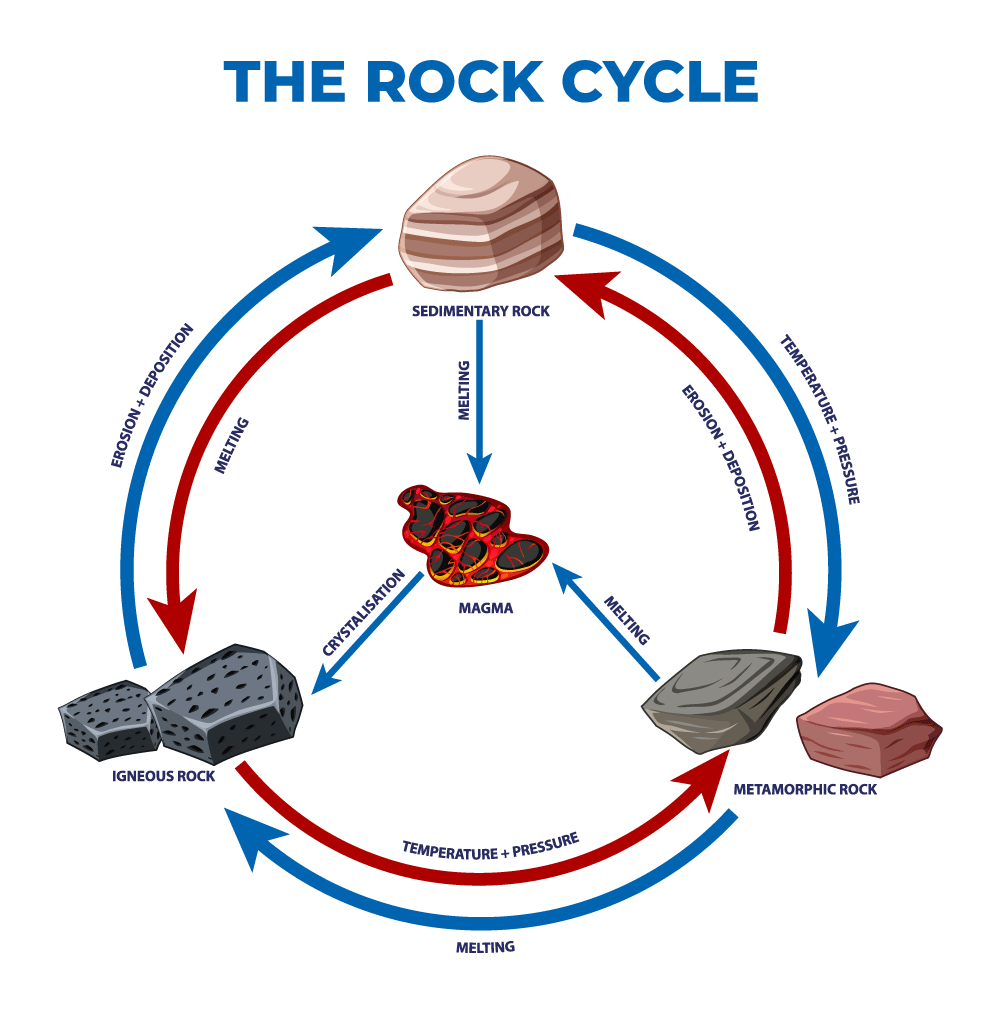
Rock Cycle Transition, Factors, and Evolving Process
3.1 The Rock Cycle. The rock components of the crust are slowly but constantly being changed from one form to another and the processes involved are summarized in the rock cycle (Figure 3.2). The rock cycle is driven by two forces: (1) Earth's internal heat engine, which moves material around in the core and the mantle and leads to slow but.
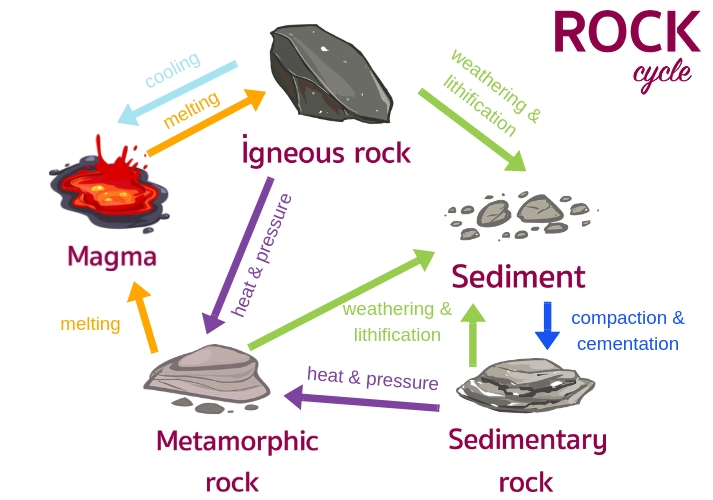
Geology Rocks The Rock Cycle Educational Resources K12 Learning
️📚👉 Watch Full Free Course:- https://www.magnetbrains.com ️📚👉 Get Notes Here: https://www.pabbly.com/out/magnet-brains ️📚👉 Get All Subjects.

Pin on Rocks and Minerals
The rock cycle is the process that describes the gradual transformation between the three main types of rocks: sedimentary, metamorphic, and igneous. It is occurring continuously in nature through geologic time. Rock Cycle What Causes the Rock Cycle It occurs due to: Plate tectonic activity Weathering Erosional processes

The Diagram Shows Part of the Rock Cycle
Summary A rock changes from one type to another when subjected to certain conditions and the process is known as the rock cycle. When lava cools down, it solidifies to form igneous rocks or primary rocks while sedimentary rocks are formed when igneous rocks are broken down into small particles, carried to other places, and deposited in layers.

Draw the diagram of rock cycle answer class 7 Brainly.in
The rock cycle is a series of processes that create and transform the types of rocks in Earth's crust. Subjects Chemistry, Earth Science, Geology There are three main types of rocks: sedimentary, igneous, and metamorphic.
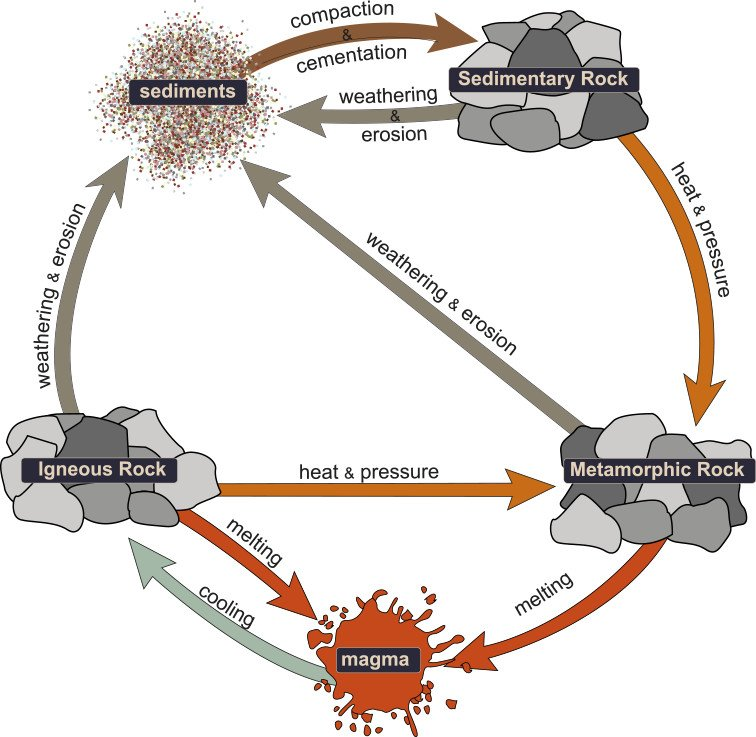
Draw the diagram of a Rock cycle and explain it.
The rock cycle describes how rocks on Earth form and change over time. When rocks are pushed deep below Earth's surface, they can melt to form magma. Magma that reaches Earth's surface through volcanic activity is called lava. Igneous rocks form when magma or lava cools and solidifies. Weathering breaks igneous and other types of rocks into.

How to draw Rock cycle diagram drawing with labels very easy way
The Rock Cycle. Many of Earth's key processes function in cycles and rock cycle is no exception. The rock cycle is a web of processes that outlines how each of the three major rock types—igneous, metamorphic, and sedimentary—form and break down based on the different applications of heat and pressure over time.
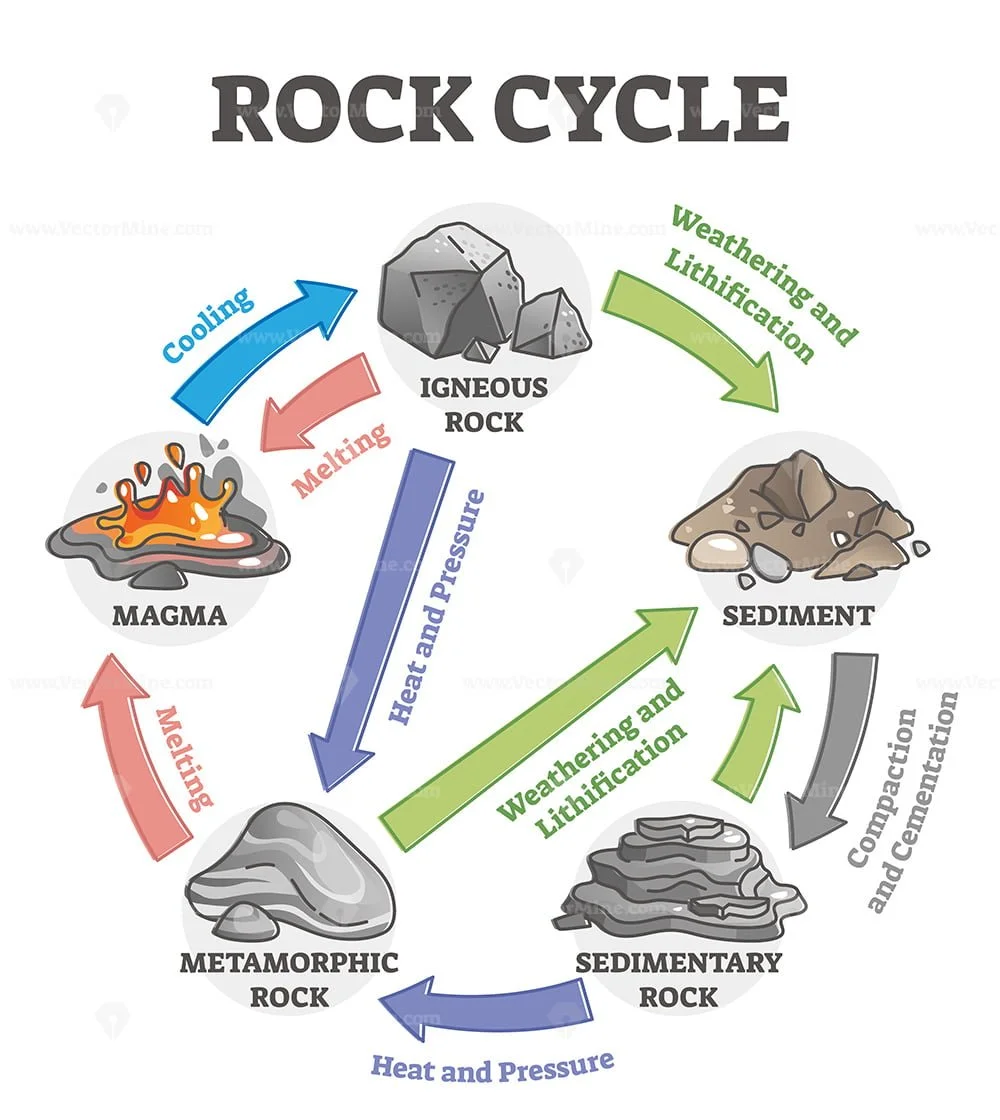
Rock cycle transformation and stone formation process labeled outline
how to draw rock cycle|rock cycle diagram|rock cycle drawingHi friends, In this video we will learn how to draw diagram of rock cycle〰️〰️〰️〰️〰️〰️〰.
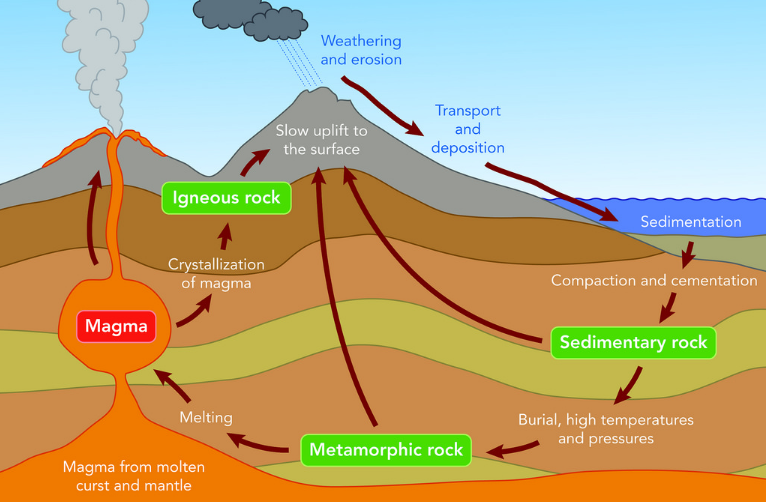
The Rock Cycle, Processes, Transition and Chart » Geology Science
The rock cycle is a natural process that describes how rocks are formed, broken down, and transformed into different types of rocks over time. It involves various geological processes such as weathering, erosion, deposition, compaction, cementation, melting, crystallization, and uplift.The rock cycle is a continuous process that occurs over millions of years and is driven by the Earth's.

Rock Cycle Diagram Class VII SST Geography Palak Jain YouTube
Help students fill in any missing parts of their rock cycle diagrams and review the entire cycle with the class. Class Voting: Ask a true/false question and have students vote by holding thumbs up for true and thumbs down for false. Tally the votes and write the total on the board. Give the right answer.
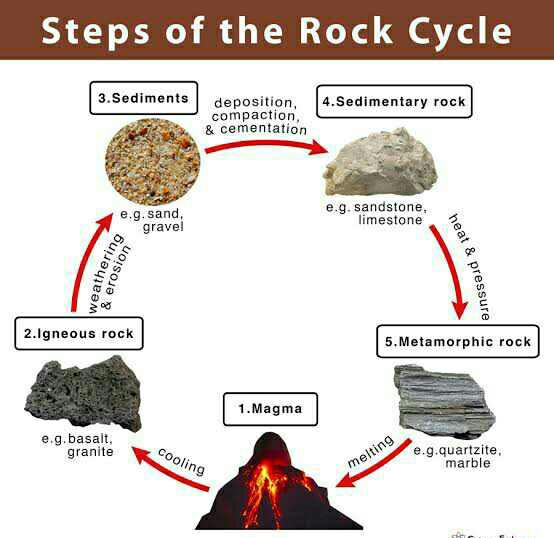
Explain the rock cycle with a diagram? EduRev Class 7 Question
It can be presented in a diagram like the one below. The concept of the rock cycle is attributed to James Hutton (1726-1797), the 18th-century founder of modern geology. The main idea is that rocks are continually changing from one type to another and back again, as forces inside the earth bring them closer to the surface (where they are.

The Rock Cycle Shalom Education
The rock cycle is the natural, continuous process that forms, breaks down, and reforms rock through geological, chemical, and physical processes. Through the cycle, rocks convert between igneous, metamorphic, and sedimentary forms. It is a dynamic system that recycles Earth's materials in different forms, from molten magma deep below the.

6.3 The Rock Cycle A Practical Guide to Introductory Geology
Diagram of the rock cycle. Legend: 1 = magma; 2 = crystallization (freezing of rock); 3 = igneous rocks; 4 = erosion; 5 = sedimentation; 6 = sediments & sedimentary rocks; 7 = tectonic burial and metamorphism; 8 = metamorphic rocks; 9 = melting. The rock cycle and plate tectonics [1]

Rock Cycle Diagram Earth and space science, Earth science, Science
3. Metamorphic rocks. Rock cycle steps :-. 1. When magma cools down to a temperature where it can no longer remain in a liquid state it turns into igneous rocks. 2. When igneous rocks are subjected to the extreme natural conditions where the process of weathering and erosion takes place, these rocks change to form sediments. 3.

Rock Cycle Diagram Worksheet
Google Classroom During the rock cycle, sediment is created when wind or water breaks down existing rocks. Which process does this best describe? Choose 1 answer: weathering A weathering erosion B erosion deposition C deposition Stuck? Review related articles/videos.
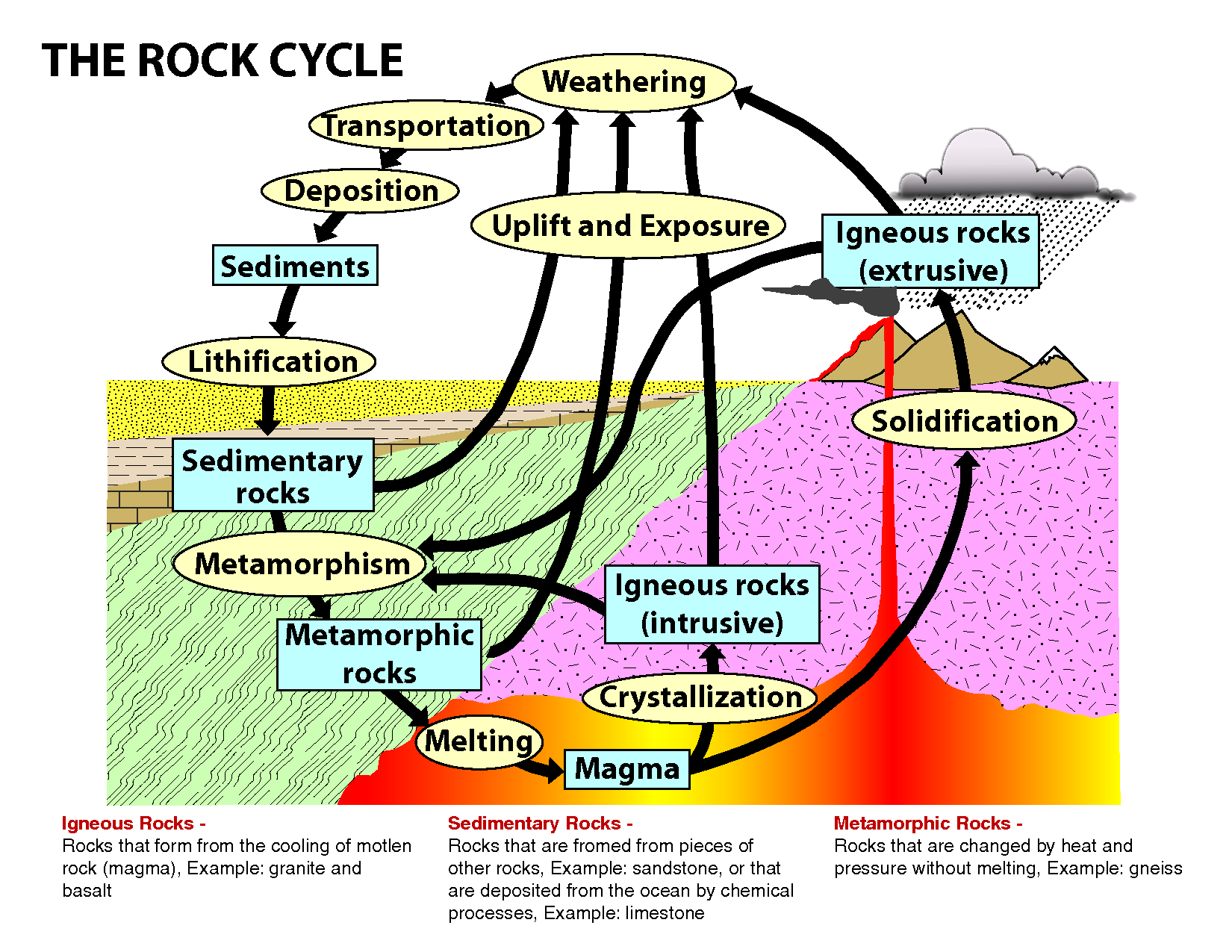
Rocks Geography study Material & Notes
The Earth has a very hot core, similar to that of the sun. Rocks constantly change their shape whose process is not visible to the naked eye. Magma flowing out of volcanic eruptions eventually cools off either inside the earth's surface or outside the earth's surface as lava. The magma from minerals becomes the rocks specifically the igneous rocks.